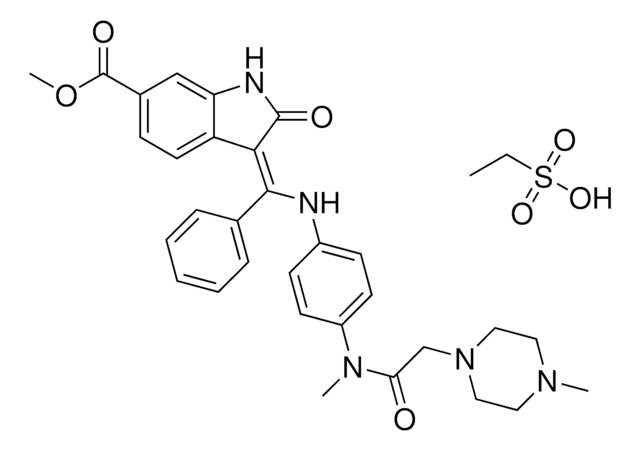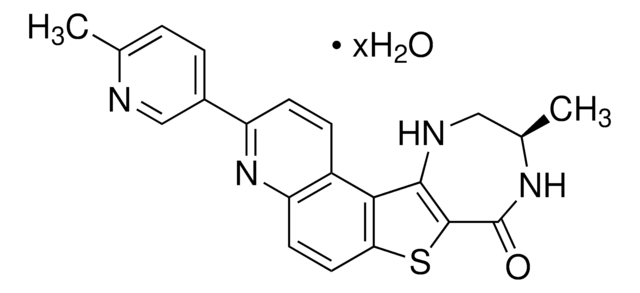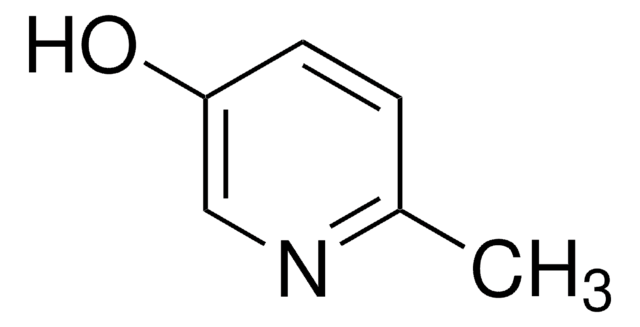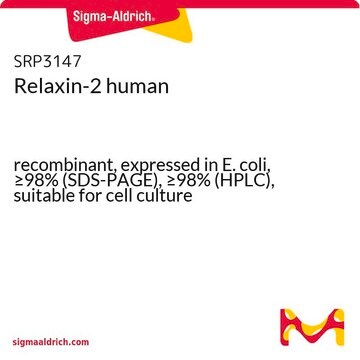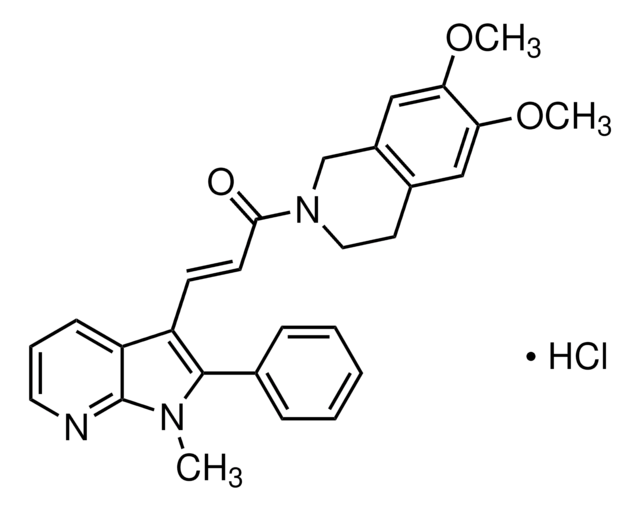According to Section 7 of the SDS, the item should be stored at room temp.
P2116
Pirfenidone
≥97% (HPLC), powder, antifibrotic agent
Synonym(s):
5-Methyl-1-phenyl-2-(1H)-pyridone
Select a Size
Select a Size
About This Item
Recommended Products
Product Name
Pirfenidone, ≥97% (HPLC)
Quality Level
assay
≥97% (HPLC)
form
powder
solubility
H2O: >10 mg/mL at 60 °C (warming for 30 minutes)
DMSO: >20 mg/mL
originator
Shionogi
SMILES string
O=C(C=CC(C)=C1)N1C2=CC=CC=C2
InChI
1S/C12H11NO/c1-10-7-8-12(14)13(9-10)11-5-3-2-4-6-11/h2-9H,1H3
InChI key
ISWRGOKTTBVCFA-UHFFFAOYSA-N
Looking for similar products? Visit Product Comparison Guide
Related Categories
General description
Application
- as a post-operative eye drop in rabbits to analyse its antifibrotic effect to improve glaucoma filtration surgery[3]
- as an anti-scarring agent to examine whether it affects the foreign body reaction after glaucoma drainage device (GDD) implantation in a rabbit[2]
- to test its antifibrotic potential in primary cultures of human orbital fibroblasts (hOFs)[4]
- as tumor necrosis factor (TNFα) inhibitor to study its effect in hypoxia[5]
Biochem/physiol Actions
Features and Benefits
signalword
Warning
hcodes
Hazard Classifications
Acute Tox. 4 Oral
Storage Class
11 - Combustible Solids
wgk_germany
WGK 3
flash_point_f
Not applicable
flash_point_c
Not applicable
ppe
dust mask type N95 (US), Eyeshields, Gloves
Choose from one of the most recent versions:
Certificates of Analysis (COA)
Don't see the Right Version?
If you require a particular version, you can look up a specific certificate by the Lot or Batch number.
Already Own This Product?
Find documentation for the products that you have recently purchased in the Document Library.
Customers Also Viewed
Articles
Bioactive small molecules for immune system signaling target identification/validation and antibiotics, antivirals, and antifungals offered.
-
What are storage conditions after receipt? I am unable to find in the website.
1 answer-
Helpful?
-
Active Filters
Our team of scientists has experience in all areas of research including Life Science, Material Science, Chemical Synthesis, Chromatography, Analytical and many others.
Contact Technical Service





